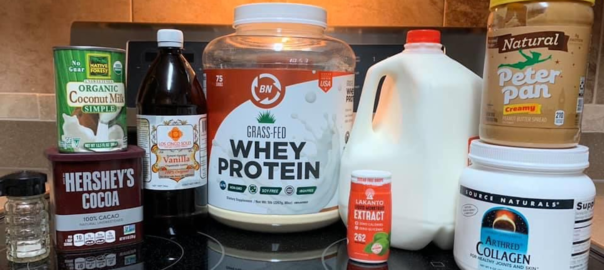Given the right product, 100% Whey Protein Shakes are an easy way to add protein and vital amino acids to your diet. When you make it with full fat milk, you add important Phospholipids that boost cell and Mito membrane health. To really boost your daily nutrition, combine your Whey Protein Shake with Nucleotide-rich foods such as eggs, or a Nucleotide-rich supplement like Brewer’s Yeast. As a post-workout recovery shake, drink a Whey Protein Shake as soon after your workout as possible. You can also use it as a quick and nutritious breakfast-on-the-go.
RECIPE: HealthMito’s Homemade 100% Whey Protein Shake:
No junk. No fillers. No artificial sweeteners. No carrageenan! And since you have complete control over the sweetness with just a few drops of Liquid Monk Fruit Extract, no more icky sweet with an awful aftertaste.
The HealthyMito “chocolate fudge flavor-base” is easiest and tastiest way to be ready to make shakes every morning in a jiffy. Not only does It speed up the process of making your daily shakes, it also gives you a rich, chocolate flavor you simply can’t get from using raw cocoa in your mix (though that isn’t horrible… the flavor base is just much better).
My mom always boiling down cocoa mixed with sugar and a little salt in a bit of water until it produced an amazing hot fudge to pour over ice cream sundaes. The next morning, she would take the leftover hot fudge, heat it back up, add milk and make the best hot cocoa ever. Reflecting on this fond childhood (not so childhood) memory, I devised my flavor base recipe. Once chilled, it thickens to be a pudding-like consistency and is ready to be used to make shakes.
READY TO MAKE YOUR FLAVOR-BASE?
Flavor-Base Ingredients:
1 can – Coconut Milk (not the milk substitute, but the canned coconut milk with the fat)
4-1/2 Tbsp – Hershey’s Cocoa Powder
1/4 tsp, heaping – Salt
3 to 4 Tbsp – Vanilla Extract
Flavor-Base Instructions:
1) In a high-rimmed sauce pot (not a pan), add coconut milk with all the coconut cream/fat.
2) Pre-mix cocoa powder and salt, then whisk it into the coconut milk.
3) Over high heat and while stirring constantly, bring the mixture to a rolling boil.
4) Reduce heat to medium. Boil for about 3 minutes (you don’t have to whisk it during this time).
5) Remove from heat and whisk in vanilla extract.
6) Cool mixture and store covered in the refrigerator for up to a week.
*This recipe makes about a week’s worth of protein shakes for one person.
READY TO MAKE YOUR SHAKE?
Shake Ingredients:
1 cup – Whole Milk — OR — Almond Milk
2 Tbsp, heaping – Flavor Base (It is best to chill it first or you will end up with a warm shake… still not bad, but it’s better cold.)
6 to 10 drops (or to taste) – Liquid Monkfruit Extract
1 scoop/serving – Whey Protein, unflavored (100% pure, plain, no fillers)
1 serving – Collagen Powder
OPTIONAL BUT HIGHLY RECOMMENDED:
1 to 2 tsp – D-Ribose
OPTIONAL ADD-ON: Make it a Chocolate Peanut Butter Shake
1 to 2 Tbsp – Natural Creamy Peanut Butter (My fav brand: Peter Pan Natural, Creamy)
Shake Instructions:
1) In a shaker cup (or a blender cup if adding things like peanut butter, etc.) add: milk or almond milk, flavor-base and Monk Fruit Extract to taste.
2) If adding peanut butter, this is when you want to do it. It will go to the bottom of the cup and not stick to any of your powders which might cause clumping.
3) Add collagen and whey protein powders.
4) Shake and/or blend and enjoy.
WHAT IF YOU RAN OUT OF FLAVOR-BASE BUT STILL NEED A SHAKE?
It won’t taste as good as making and using the flavor-base; but if you’re in a pinch, you can still made a homemade protein shake. I do recommend using a blender so the cocoa powder mixes sufficiently.
PLACE WET INGREDIENTS IN A BLENDER:
1 cup – Whole Milk — OR — Almond Milk
1 to 2 Tbsp – Coconut Milk (blended with cream/fat) OR Full-Fat Plain Greek Yogurt
1 tsp – Vanilla Extract
6 to 10 drops (or to taste) – Liquid Monkfruit Extract
OPTIONAL: 1 to 2 Tbsp – Natural Creamy Peanut Butter
MIX DRY INGREDIENTS TOGETHER FIRST THEN ADD TO THE WET INGREDIENTS ABOVE:
1 scoop/serving – Whey Protein, unflavored (100% pure, plain, no fillers)
1 serving – Collagen Powder
2 Tsp – Hershey’s Cocoa Powder
2 to 3 dashes – Salt
OPTIONAL BUT HIGHLY RECOMMENDED:
1 to 2 tsp – D-Ribose
Directions: Blend it until smooth, throw it in a shaker cup and you’re ready to go.
*Note: The addition of D-Ribose allows the building blocks for the formation of new ATP. The addition of Collagen Powder adds additional protein and amino acids to the shake content.
VARIATIONS:
For a fruit flavored shake, leave out the chocolate and the peanut butter and replace it with your favorite fruits and/or berries. Stronger flavored fruits such as peaches and berries have a better chance at flavoring your shake.
KETO CONSIDERATION: If you are eating keto / low-carb, fruit smoothies are going to put you at super high risk of busting your carb macros.
HEALTHYMITO HOMEMADE PROTEIN SHAKE
PRODUCT RECOMMENDATIONS:
100% Whey Protein Powder: I personally use BN Labs Grass Fed 100% Whey Protein Concentrate (unflavored). It is Non-GMO, rBGH free, and their filtration process gives you a quality product that blends easily and provides a smooth result. You can buy directly from BN Labs at the following link:
BN Labs – Grass Fed Whey Protein
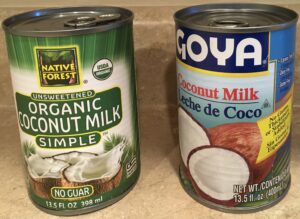 Canned Coconut Milk: This is not the boxed milk substitute, rather it is the canned milk that comes with the coconut fat. I am always looking for the cleanest products and the best one I’ve found is from Native Forest and the product is their Organic Simple Coconut Milk. Ingredients are “simply”: organic coconut and filtered water. A close second is Goya Coconut Milk.
Canned Coconut Milk: This is not the boxed milk substitute, rather it is the canned milk that comes with the coconut fat. I am always looking for the cleanest products and the best one I’ve found is from Native Forest and the product is their Organic Simple Coconut Milk. Ingredients are “simply”: organic coconut and filtered water. A close second is Goya Coconut Milk.
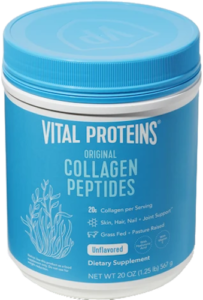 Collagen Powder: A good Collagen supplement should contain high-quality collagen peptides with a variety of amino acids. Some products also contain other vitamins/minerals that help with the absorption and utilization of the Collagen. One very necessary co-factor that boosts absorption and utilization of collagen peptides is Vitamin C. If your brand of collagen does not contain Vitamin C, you should add it to your intake of collagen. Also look for a collagen powder that dissolves quickly, even effortlessly, in any liquid. Unflavored varieties expand your options and opportunities to use this fabulous addition to your nutrient intake; having little to no taste, allowing for ease of use in drinks, shakes and smoothies, and sprinkled in soups, etc. The one I’ve grown to like best, both for the quality of the product and the price, is Vital Proteins Unflavored Collagen.
Collagen Powder: A good Collagen supplement should contain high-quality collagen peptides with a variety of amino acids. Some products also contain other vitamins/minerals that help with the absorption and utilization of the Collagen. One very necessary co-factor that boosts absorption and utilization of collagen peptides is Vitamin C. If your brand of collagen does not contain Vitamin C, you should add it to your intake of collagen. Also look for a collagen powder that dissolves quickly, even effortlessly, in any liquid. Unflavored varieties expand your options and opportunities to use this fabulous addition to your nutrient intake; having little to no taste, allowing for ease of use in drinks, shakes and smoothies, and sprinkled in soups, etc. The one I’ve grown to like best, both for the quality of the product and the price, is Vital Proteins Unflavored Collagen.
D-Ribose: Please note that if you have a corn allergy, the majority of D-Ribose on the market is sourced from corn. There are alternatives but they are more expensive and more difficult, but not impossible, to find.
Greek Yogurt: The trend for the last generation or so has been that of low or no-fat products. The yogurt industry has been consumed by this notion of fat being unhealthy. Contrary to popular belief, eating healthy fats do not contribute to weight gain. Healthy fats are important to overall health and energy production and milk fat also contains Phospholipids. Moderate healthy fat intake should be a part of your diet (unless you have a fatty acid oxidation issue unable to be mediated). It took me a long time to find a brand of yogurt that was not low or no-fat. Cabot’s and Fage both carry a plain, full-fat Greek yogurt that are available in my area with no sugar added, and it also DOES NOT contain Carrageenan. Basically, you are looking for simple ingredients, no Carrageenan, higher fat content and lowest sugar content.
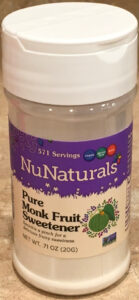 Monkfruit Extract – Powder: I’ve look far and wide for a good, keto-friendly sweetener. I have a few different ones depending on what I’m using it for. For shakes and my nighttime herbal tea, my pick is NuNaturals Pure Monk Fruit Sweetener. It has no fillers; just powdered Monk Fruit extract. Best place I’ve found to buy it is Vitacost.com; though it is starting to pop up in stores as well.
Monkfruit Extract – Powder: I’ve look far and wide for a good, keto-friendly sweetener. I have a few different ones depending on what I’m using it for. For shakes and my nighttime herbal tea, my pick is NuNaturals Pure Monk Fruit Sweetener. It has no fillers; just powdered Monk Fruit extract. Best place I’ve found to buy it is Vitacost.com; though it is starting to pop up in stores as well.
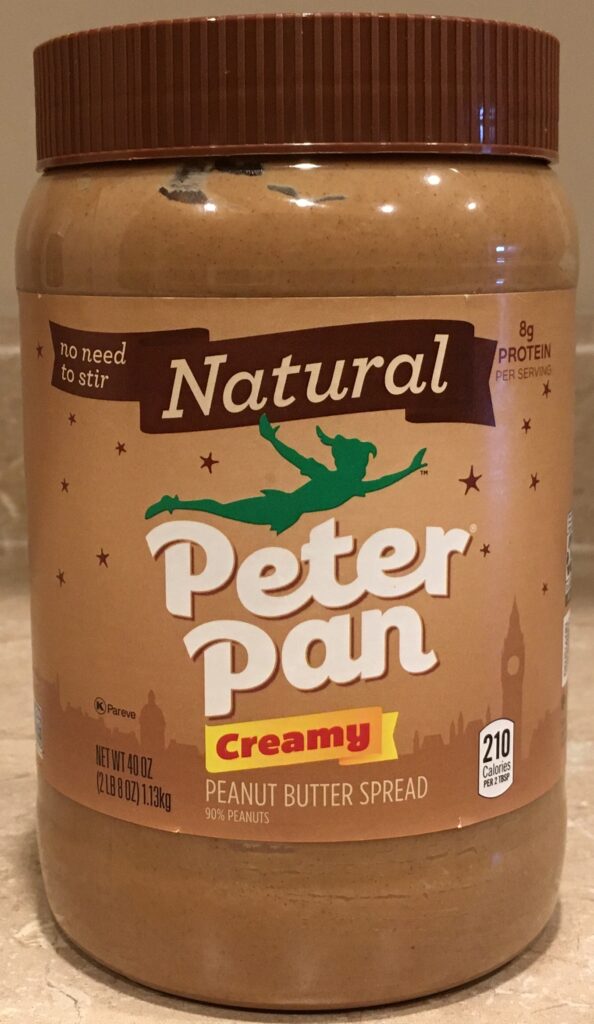 Peanut Butter: Again, you are looking for few ingredients and simple, clean ingredients. I’ve tried all the major brands and my favorite is Peter Pan Naturals, Creamy.
Peanut Butter: Again, you are looking for few ingredients and simple, clean ingredients. I’ve tried all the major brands and my favorite is Peter Pan Naturals, Creamy.
Peanut Butter Powder: Some people prefer to use powder. It is easier to scoop than peanut butter… but you miss out on licking the spoon. Just make sure to read the ingredients. Look for brands that contain as few ingredients as possible. Several brands contain corn syrup solids. I personally don’t see much benefit to the powder. I don’t prefer the flavor and you might get one less carb but also less fat… Don’t be afraid of the fat.
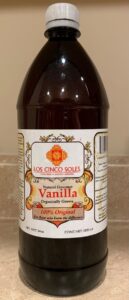 Vanilla Extract: I admit it, I’m a vanilla snob. After trying all the major brands available in grocery stores, and after Costco changed their suppler to a not so great one, I went international… literally. On a cruise to Mexico, I ran across the best vanilla I’ve ever had (and Mexico had a lot of different brands to choose from). But my hands-down favorite is Los Cinco Soles. And I buy it in bulk because I use it for so many different recipes. If you happen to be in Cozumel, I highly recommend buying 4 or 5 large bottles. They were running $18 per liter, which is pretty darn cheap for a really good vanilla. Otherwise you can order it online. Definitely not as cheap, BUT still the cheapest vanilla around at approx $35 for a liter (that includes shipping). The smell is amazing and the taste is extraordinary.
Vanilla Extract: I admit it, I’m a vanilla snob. After trying all the major brands available in grocery stores, and after Costco changed their suppler to a not so great one, I went international… literally. On a cruise to Mexico, I ran across the best vanilla I’ve ever had (and Mexico had a lot of different brands to choose from). But my hands-down favorite is Los Cinco Soles. And I buy it in bulk because I use it for so many different recipes. If you happen to be in Cozumel, I highly recommend buying 4 or 5 large bottles. They were running $18 per liter, which is pretty darn cheap for a really good vanilla. Otherwise you can order it online. Definitely not as cheap, BUT still the cheapest vanilla around at approx $35 for a liter (that includes shipping). The smell is amazing and the taste is extraordinary.
Los Cinco Soles – Vanilla Extract
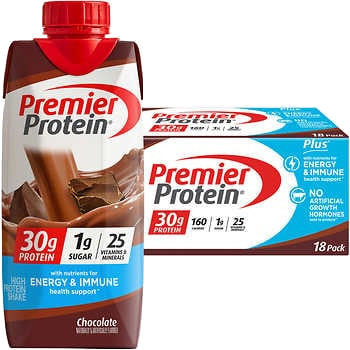 Pre-made Protein Shakes: I do NOT like using pre-made shakes; but sometimes I’m traveling and it is not conducive to make my own. Pre-made shakes are both more expensive and also contain many unnecessary additives including Carrageenan (now found in a LOT of products, particularly dairy; so watch your labels). Carrageenan is a thickener and is now thought to be cancer promoting in large quantities. Although I rarely use them, I do have my favorite: Premier Protein. Particularly the chocolate, but oddly enough the apple oatmeal is pretty tasty. If you like peach milkshakes, the peach isn’t too bad but it is WAY too sweet for my “keto-sensitive-tastebuds” liking. Cases at Costco are the cheapest way to pick these up and they run sales on them often.
Pre-made Protein Shakes: I do NOT like using pre-made shakes; but sometimes I’m traveling and it is not conducive to make my own. Pre-made shakes are both more expensive and also contain many unnecessary additives including Carrageenan (now found in a LOT of products, particularly dairy; so watch your labels). Carrageenan is a thickener and is now thought to be cancer promoting in large quantities. Although I rarely use them, I do have my favorite: Premier Protein. Particularly the chocolate, but oddly enough the apple oatmeal is pretty tasty. If you like peach milkshakes, the peach isn’t too bad but it is WAY too sweet for my “keto-sensitive-tastebuds” liking. Cases at Costco are the cheapest way to pick these up and they run sales on them often.
SOME WHEY PROTEIN BASICS:
Whey protein is a very popular way of delivering both high protein that is easily digestible (absent dairy sugar and/or protein digestive issues and some products even contain dairy digestive enzymes) and a comprehensive amino acid profile important to cells, tissue, muscle and bone health and energy production.
“Whey concentrate” has undergone less filtration and contains more fat, lactose and other components.
“Whey isolate” has had additional filtration that removes more of these components and you get a more “isolated” form of protein and amino acids.
Tip: If you are looking at the nutritional facts on a particular product, look at the serving size (in grams) and compare that figure with the total grams of protein. There will always be some difference between these two numbers. However, the wider the difference, the more filler ingredients are being used in the product.
The filtration process is also important. Processing should always be under low heat and low acid conditions so the protein is not denatured. This allows the Whey to remain biologically active (a fancy way of saying it will actually have an effect).
Additionally, there are several other filtration methods advocated for by their manufacturer, such as cross-flow micro filtration. Each company seems to boast that their filtration process is the better product. It is hard to find specifics on exactly what these many methods entail. However, there is one process that should be of concern, Ion Exchange. As the name would imply, it has the potential of changing the charges associated with the different nutrients in the Whey and can also work to destroy key components of it, which one could speculate would change the effectiveness or even usefulness of what remains. Ion Exchange also utilizes hydrochloric acid and sodium hydroxide. So if you are interested in avoiding as many chemicals as possible, you would want to avoid products processed in this way.
There is also the discussion of Whey verses Casein protein. They are both derived from milk. Here is the quick and easy on this:
Whey: Whey breaks down quicker and is more easily absorbed. If it is processed appropriately, Whey should contain all the major amino acids required by humans, including the “essential” branch-chain amino acids (BCAAs) that can’t be produced by the body and thus must be derived from food sources. Whey stimulates muscle synthesis (growth), which contributes more stem cells that facilitate that growth. Used in conjunction with quick-burst, weight bearing exercise, this muscle gain should increase both the total number of Mito and improve their overall functional capacity, as opposed to simple cell turnover.
Casein: Casein is higher in overall protein, but unless you are truly body building this could mean too much protein consumption. Casein is slower to digest and includes a slower release of the amino acids it contains. The biggest benefit to Casein would be its ability to inhibit protein breakdown (where as Whey stimulates building muscle). So if muscle wasting (protein cannibalism) is an issue, adding Casein to your Whey protein intake may be of some benefit. But it would likely be more beneficial to add some Casein to your intake verses substituting it in place of Whey because Whey provides more benefits in regards to recovery from physical activity and in feeding energy production through amino acid delivery.
